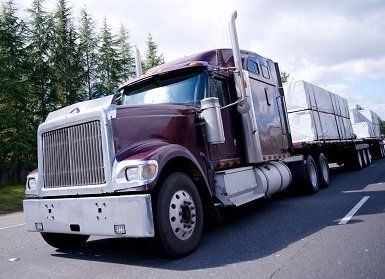Bulk Diesel Exhaust Fluid, Storage & Dispensing Equipment
What is Selective Catalytic Reduction (SCR)?
SCR is an acronym for Selective Catalytic Reduction. SCR is a technology that uses a urea-based diesel exhaust fluid (DEF) and a catalytic converter to significantly reduce oxides of nitrogen (NOx) emissions. SCR is being used by almost all OEM manufacturers.
Calkins Diesel Exhaust Fluid (D.E.F)
is your local DEF supplier
for the Englewood, Florida area. Call us today at (941) 475-9484.
How does an SCR System Work?
The purpose of the SCR system is to reduce levels of NOx 9oxides of nitrogen emitted from engines) that are harmful to our health and the environment. SCR is the after-treatment technology that treats exhaust gas downstream of the engine. Small quantities of DEF are injected into the exhaust upstream of a catalyst, where it vaporizes and decomposes to form ammonia and carbon dioxide. The ammonia (NH3) is the desired product which, in conjunction with the SCR catalyst, converts the NOx to harmless nitrogen (N2) and water (H2O).
What is BlueDEF for?
When used in an SCR system, BlueDEF will reduce the levels of NOx emissions of these engines.
What is BlueDEF Made of?
BlueDEF is a high-purity, 32.5% strength urea solution and deionized water.
What is Urea?
Urea is a compound of nitrogen that turns to ammonia when heated. It is used in a variety of industries, including as a fertilizer in agriculture.
Why Use a 32/5% urea Solution?
The 32.5% urea concentration is the ideal solution as it provides the lowest freeze point. Also, SCR systems will be calibrated tot he 32.5 % solution so that optimum NOx will be reduced during operation.
What is the Freeze Point of DEF?
A 32.5% solution of DEF will begin to crystallize and freeze at 12 degrees Fahrenheit (-11 degrees Celsius). At 32.5%, both the urea and water will freeze at the same rate, ensuring that as it thaws, the fluid does not become diluted or overconcentrated.
Does DEF Expand When Frozen?
Yes, DEF expands by approximately 7% when frozen. DEF packaging and tanks are designed to allow for expansion.
How Do I Keep DEF from Freezing? What Happens if the DEF Freezes in the Tank of the Vehicle?
During vehicle operation, SCR systems are designed to provide heating for the DEF tank and supply lines. If the DEF freezes when the vehicle is shut down, start-up and normal operation of the vehicle will not be inhibited. The SCR heating system is designed to quickly return the DEF to liquid form and the operation of the vehicle will not be affected.
Does It Need to Meet Any Quality Standards?
Yes, it needs to meet the ISO 22241 quality standard.
Is it Hazardous, Toxic, or Flammable?
No, BlueDEF is not hazardous, toxic, or flammable.
Is DEF Corrosive?
DEF is corrosive to copper and brass, as well as other materials. Only approved materials, as listed in the ISO standard, should be used.
What Has Happened to Make DEF Necessary?
The EPA has mandated the reduction of NOx emissions released into the environment.
How is BlueDEF Carried on the Vehicle?
BlueDEF is stored in a designated tank on the vehicle. It is then replenished like fuel.
What Happens if the Vehicle Runs Out of DEF?
Many vehicles are equipped with a DEF gauge on the dash to alert the driver of the fluid level. If the level becomes low, an alert will let the driver know the DEF needs to be replenished. If the driver runs out completely, the vehicle power will be reduced to encourage the operator to refill the DEF tank. Once the DEF tank is refilled, normal power levels will be restored on the vehicle.
Does BlueDEF Mix with Fuel?
No, it is not an additive. It is sprayed into the exhaust stream where it is hydrogenated before the catalytic converter causes the breakdown into nitrogen and water.
How Much DEF Will I Need?
DEF is consumed a ta rate of approximately 3-5% by volume to diesel consumption.

